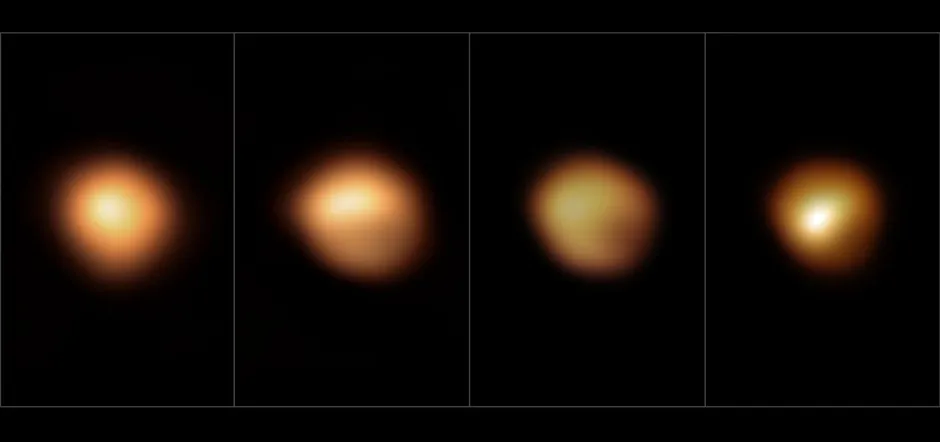Astronomers have discovered the cause of the ‘Great Dimming of Betelgeuse’: a cloud of dust partially concealing it from us.
As one of the largest stars visible to the naked eye, the red supergiant star Betelgeuse is a familiar sight to professional and amateur astronomers alike. That’s perhaps why it was so surprising when the star’s brightness started to drop in October 2019.
By February 2020, the star, which marks the right shoulder in the constellation of Orion, had hit a record low of only 40 per cent of its usual brightness.
This dramatic drop sparked speculation that Betelgeuse was about to go supernova – that is, reach the end of its life as a red supergiant, collapse, and then bounce into a fiery explosion so bright we’d even be able to see it in the daytime. It wasn’t immediately clear to astronomers whether or not this was the case, since a supernova hasn’t been observed in our Galaxy since astronomer Johannes Kepler saw one in 1604.
But it never happened, and by April 2020, Betelgeuse was back to normal. Now, images of the star, taken with the European Southern Observatory’s Very Large Telescope, along with data from the GRAVITY instrument, have revealed what happened to it.

“We have directly witnessed the formation of so-called stardust,” said Dr Miguel Montargès, from the Observatoire de Paris, France, and KU Leuven, Belgium. “For once, we were seeing the appearance of a star changing in real time on a scale of weeks.”
The surface of Betelgeuse is always changing. Giant bubbles of gas grow, shrink and move around within the star, and occasionally it burps one out. Before the Great Dimming began, Betelgeuse released one of these bubbles. Then, a patch of the star’s surface cooled down, and this temperature drop allowed the gas to cool enough to condense into solid dust.
This cloud of dust partially concealed Betelgeuse from the Earth, particularly in the southern region.
Read more about astronomy:
- How the upcoming missions to Venus could reveal how life on Earth will end
- Nearby star's death will cause a chaotic game of planet pinball
- James Webb Space Telescope: How does it work and what will it see?
“The dust expelled from cool evolved stars, such as the ejection we've just witnessed, could go on to become the building blocks of terrestrial planets and life,” said Emily Cannon, a PhD student at KU Leuven.
“Looking up at the stars at night, these tiny, twinkling dots of light seem perpetual. The dimming of Betelgeuse breaks this illusion.”
Reader Q&A: What ignites supernova explosions?
Asked by: Matt Bell, Southampton
Although there are many classifications of supernovae, there are two basic mechanisms that result in stars blowing themselves apart. The first involves the accumulation of material into a white dwarf star, the extremely dense final evolutionary state of most normal stars. This extra material could come from a merger with or by simple accumulation from a close companion star. As this material accumulates on the white dwarf, its core temperature increases until a runaway nuclear reaction occurs. In a fraction of a second most of the white dwarf undergoes nuclear fusion, blowing the star apart in the process.
The other way a supernova can ‘ignite’ is by the collapse of a high-mass stellar core. As the star reaches the end of its life the nuclear fuel becomes exhausted, the energy source switches off and the pressure holding the star up against gravity disappears. The core collapses almost instantaneously, causing a catastrophic release of energy that destroys the star. If the core mass is high enough, however, the star may become a neutron star or black hole with little radiated energy.
Read more: